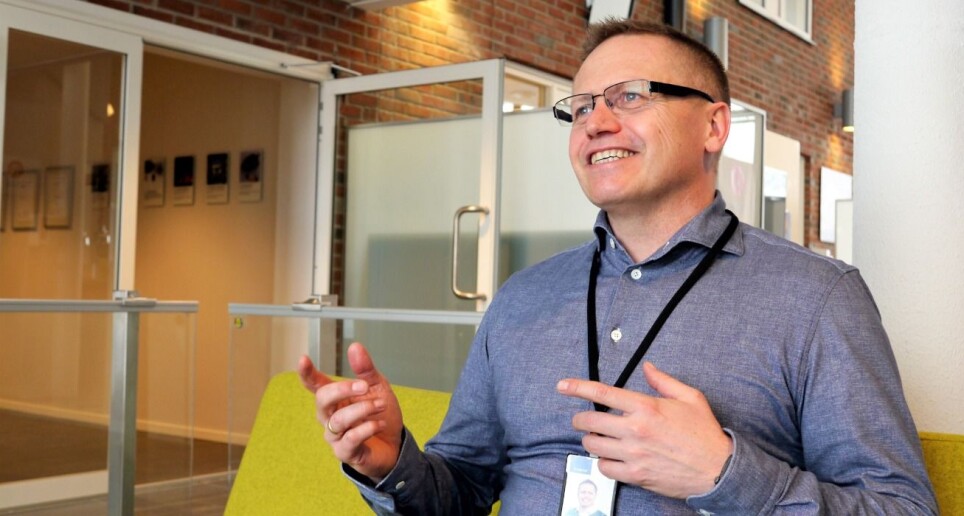THIS ARTICLE/PRESS RELEASE IS PAID FOR AND PRESENTED BY SINTEF - read more

Working from home is here to stay – and is transforming the roles of managers
The Covid-19 pandemic has forced companies to change the way they organise their day-to-day activities. Many people find working from home no problem at all. According to researchers, there is little to suggest that these changes will be reversed once the pandemic is over.
This is the opinion of Nils Brede Moe, a Chief Scientist at SINTEF, Norway.
He is heading a team of researchers who throughout 2020 – ‘the year of working from home’ – has been studying the dynamics both within teams and between managers and employees in five major Norwegian companies.
His team has carried out both in-depth interviews and quantitative surveys and is now hard at work to complete a number of scientific articles for leading journals.
“One of our key findings is that managers who can relax their need to control their subordinates and make themselves superfluous by practising so-called ‘serving leadership’ are the ones who have tackled the challenges of the last year best”, he explains. “At the opposite end of the scale, there are those who focus on formal processes and maintaining control, and this group have had things much tougher,” says Moe.
“Nor does working from home result in lower levels of individual productivity. “In fact, the opposite is frequently the case,” he adds.
Pandemic offers researchers greater insights
Moe believes that this last year, when working from home has been either mandatory or highly recommended, has been a test of how effectively companies and organisations are structured.
“We’ve been conducting research into teamwork and interpersonal relations in the workplace for many years, and the pandemic has offered us a unique opportunity to look into how companies adapt to sudden changes in their day-to-day situations.”
Trust-based leadership is best
Before Christmas, the Norwegian Union of Municipal and General Employees (Fagforbundet) carried out a survey of 655 managers employed in its member companies and asked them what style of leadership they emphasised most during the pandemic.
As many as 84 percent responded that trust-based and motivational leadership was most important, followed by structure-based leadership (with 74 percent). Controlling leadership came out bottom of the list. Only five percent said that this type of leadership was the most important.
The results of the survey carried out by the union thus support research that SINTEF had already completed.
“Why is this the case?”
“The situation is complicated,” says Moe. “An important reason is probably that Norwegian workplace dynamics are much more egalitarian. We favour flatter hierarchies and aspire after equality to a much greater extent than in other countries. The high levels of trust that exist between managers and employees mean that the transition to the extensive use of working from home during the last twelve months has gone relatively smoothly and without any major problems,” he says.
“In Norwegian knowledge companies, there is nothing new about the idea of working from home or working from anywhere,” he continues. “Many factors indicate that our experiences during the pandemic will accelerate the development of so-called ‘hybrid’ working models in the future,” says Moe.
“Does this mean that there’ll never be a return to ‘normal’?”
“I think it’s very unlikely,” he says. “There are clear beneficial outcomes of working from home during certain periods – the results of increased levels of employee flexibility. In conversations that we’ve had with many major Norwegian companies, a clear trend is emerging – the hybrid model is here to stay,” says Moe.
The shift to a hybrid model will be more disruptive than the move to all-remote work.

It’s not easy being a new recruit working from home…
This is the opinion of Aksel Tjora, who is a Professor at the Department of Sociology and Political Science at NTNU.
“It’s difficult to predict how day-to-day life in Norwegian organisations will turn out when things start to return to normal,” says Tjora. “But no-one can doubt that our experiences from the pandemic will dominate the discussion,” he says. Since the start of this year, Tjora has been working from home in the rural atmosphere of Råkvåg in Indre Fosen, about 70 kilometres north of Trondheim.
He has joined ten other people to form the ‘Sjøgata Arbeidslag’ – a small community of remote workers gathered together on the old quayside by the fjord.
“I’m no less productive working here,” says Tjora, who describes himself as a digital nomad.
“However, the hybrid workplace model has its shortcomings, especially for new employees, who experience a much tougher induction into organisations that demand extensive amounts of remote working,” he says.
Nils Brede Moe at SINTEF agrees.
“Extensive and effective networks boost productivity in any company, and our research indicates that personal relationships are best established when people meet face-to-face,” he says. “Our studies demonstrate that employees who already had established networks before they started working from home, benefited greatly from them during the pandemic and performed their assignments much better as a result,” says Moe.
…but fewer time thieves are an advantage
Moe is quick to point out the purely practical benefits of the hybrid workplace model, such as increased employee flexibility, fewer interruptions, less noise and commuting.
“Our interviews reveal that people can concentrate more when working with complex assignments,” he says. “Most of us have experienced being interrupted by others while we’re trying to work, and this can be irritating. It might take as much as 10 to 20 minutes before we can return to our working state after such interruptions,” says Moe.
“What about time thieves?”
“Yes, they distract our focus,” he says. “However, it’s also important to be aware that what suits a single individual may not necessarily be optimal for the team or the organisation as a whole.”
To illustrate his point, Moe uses a sporting metaphor.
“In team sports, we judge success based not only on a player’s performance, but also on his or her contribution to the team. Team members who only try their hardest for their own benefit may damage the productivity of the team as a whole. The key lies in finding the balance between optimising individual, team and organisational productivity, and to be aware of possible necessary compromises,” says Moe.
Reference:
Darja Šmite et.al.: Work Patterns of Software Engineers in the Forced Working-From-Home Mode, Communications of ACM, 2021.
See more content from SINTEF:
-
How Svalbard is becoming a living lab for marine restoration
-
New study: Even brand-new apartments in cities can have poor indoor air quality
-
Fresh hope for patients with chronic inflammatory bowel disease
-
Testing a giant ship: May take five kilometres to stop
-
A robot is helping researchers hunt for the best cancer warriors
-
Locomotives that run on diesel can be electrified




































